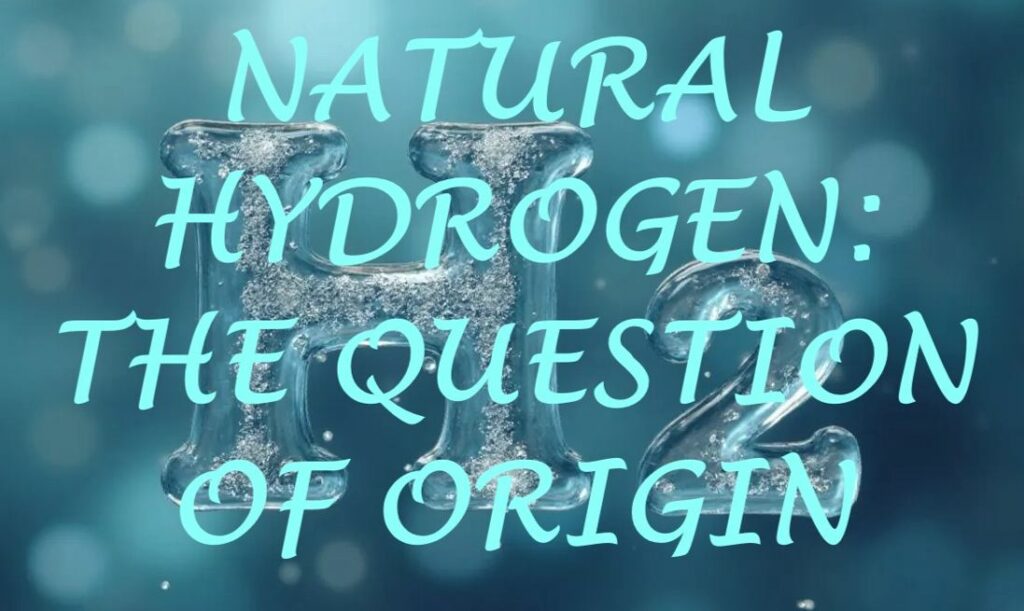Part II (Continuation of Part I).
- Hydrogen Generation Volumes and Timeframes.
2.1. Olivines Serpentinization. The latest (known to me) paper on the subject of shortcomings of crustal generation processes was published by A. Templeton et al. (2024) less than a year ago. The paper is mostly about the proposed stimulation scenarios aiming to generate (commercially) sufficient volumes of hydrogen beneath the surface, a.k.a. an “artificial reactor” down below.
(Now, apart from the list of petrophysical and chemical doubts we have about this process, the very idea of “helping” Mother Nature sounds a bit too far-fetched… One may say this process is similar to fracking – bad news: it is not, from the multiple aspects).
In the paper, it is asserted that “A simple technoeconomic analysis shows that the stimulation methods to be used must increase the rate of net hydrogen production at least 10,000-fold compared to the estimated natural rate to economically produce hydrogen from engineered water/rock reactions in the peridotite formations., i.e. by means of serpentinization and/or ferrolysis.
There is the FOUR orders of magnitude difference between what is expected and what the research outcome tells us. How very astonishing.
Summarizing, sounds like serpentinization or ferrolysis are NOT the way hydrogen could be expected to be produced in nature in commercial volumes.
2.2. Biotite Chloritization. According to Murray et al. (2020) , this process is similar to serpentinization (well, close enough for the purpose of this discussion). In this paper, please note the text on p. 13, quote: “Our simulations also provide insight on the time scales involved in the H2 generation processes occurring in the deep geothermal reservoir of Soultz-sous-Forêts. At conditions of 165°C and -245 mV, the fresh standard porphyritic granite produced 51.3 mol/m3 H2 in 147 years after the complete dissolution of the total amount of biotite and the precipitation of magnetite. The process duration is remarkably fast compared with the age of the granite, at 330 Myr…”
Please note the need for the very specific conditions for these reactions, which obviously makes their “operational window” extremely narrow. These conditions may be established and sustained for sufficient period in the lab – but in NATURE? We have serious doubts in this.
Summarizing the conclusions made by the authors of this paper, the structure aged 330 million years is supposed to keep producing hydrogen which had to be completely depleted after the first 147 years of this process.
I know this probably reads as pure theorizing but… SIX orders of magnitude between these two timeframes???
Additionally, once again, there is more than one way to express the process of biotite chloritization – similar to serpentinization (see Part I). Murray et al. describe it in a very sophisticated way, with compulsory presence of brines of certain salinity, at a certain temperature. We all know that the more complicated the scenario is, the more it is prompt to failure.
Meanwhile, a very simple and logic formulae was suggested by D. Pandit (2014) describing “the formation of chlorite and K-feldspar because of alteration of biotite” in a simple and rather elegant way – once again, with hydrogen PARTICIPATION in this process as FEEDSTOCK and, apparently, as a chemical reducing agent:
5Bio + 3An + 3SiO2(aq) + 4H2O + 6H+= 3Chl + 5Kf + 3Ca2+, and
10Bio + Kln + 7H2O + 10H+= 6Chl + 14SiO2(aq) + 10K+.
(For those of you who have an idea of how petrophysical properties change in the course of alteration processes: just imagine the “hydrogen reservoir” sealed by a granite sill which is being “chewed on” by hydrogen for a couple millions of years… ending up with no seal at all. Still wanna discuss hydrogen “trapped” in the “pressurized” pays?)
2.3. The paper published by P.B. Toft et al. (1990) represents a very comprehensive list of serpentinization reactions (see page 8 (144)). This list is quite long, therefore we refrain from bringing it here – just one very typical example:
30Fo(99%) + 44.6H20 = 15Lz + 0.2Mt + 14.4Br + 0.2H2
The most striking details here are:
(a) the tiny amounts of hydrogen (0.2 molecules) formed as a result of 30 molecules of Forsterite-type olivine serpentinization (1 mole H2 to 150 moles Fo ratio), and
(b) enormous amounts of water (223 moles of water to generate 1 mole of H2) needed for this reaction.
Question: Where all this water is supposed to come from?
(To be continued…)
Disclaimer: The views and opinions expressed in this article are those of the author and do not necessarily reflect the official policy or position of Energy News. This content is presented as the author’s analysis based on available information at the time of writing. It should not be considered as representative of Energy News or its editorial stance. Readers are encouraged to consider this as one perspective among many and to form their own opinions based on multiple sources.





